Gabriel Figueroa: An Incredible Legacy of Mexican Cinema
Celebrated as one of Mexico best cinematographers, Gabriel Figueroa transformed cinema, vividly introducing Mexicos landscapes, faces, and stories to...
Jimena Aullet 2 December 2024
In season three of Netflix’s Emily in Paris, the cast travels around Paris, France, and visits many famous museums, monuments, and sites. While many locations have been shown in seasons one and two, season three gives viewers a more intimate look at Paris’s architectural and cultural history. For instance, we finally travel with Emily atop the Eiffel tower and follow Camille and Gabriel to the Musée d’Orsay. But first, let’s look at the end of season two to see where the show left off.
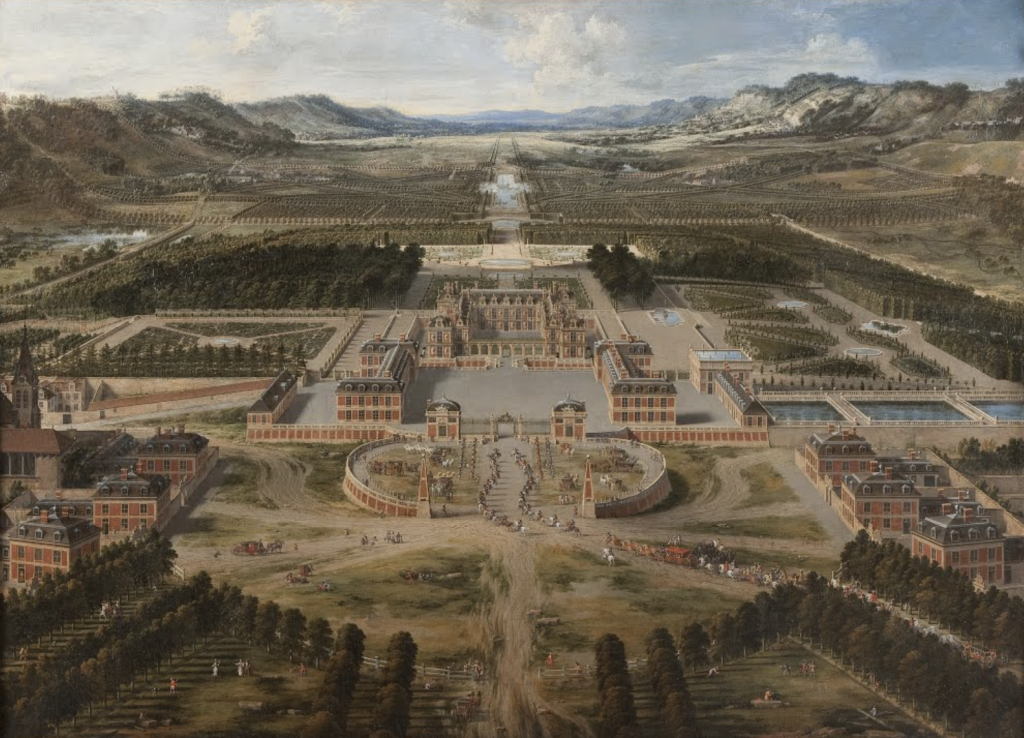
Pierre Patel, View of the palace and gardens of Versailles, seen from the avenue de Paris in 1668, ca. 1668, Château de Versailles, Paris, France. Museum’s website.
The end of season two of Emily in Paris goes out with a bang; hence its title, “French Revolution,” and its location in Versailles. Fabulously, the finale is filmed in The Hall of Mirrors in the Palace of Versailles. King Louis XIII built the foundation of the Palace between 1631 and 1634, right where his small hunting lodge had been since 1624. At first, Versailles was a retreat away from the busy life of Paris, where the royal family enjoyed the outdoors and hunting.
The grandeur of Versailles as we see it today is credited to King Louis XIII’s son and heir, King Louis XIV (the sun king), who spent 50 years renovating Versailles. The Palace underwent many updates from 1661 until he died in 1715. He added the forecourt in 1662, “Le Vau’s Envelope” in 1668, the Royal Chapel in 1699, and so on. Versailles became so luxurious that the French court moved there from Paris and claimed it as their main residence.
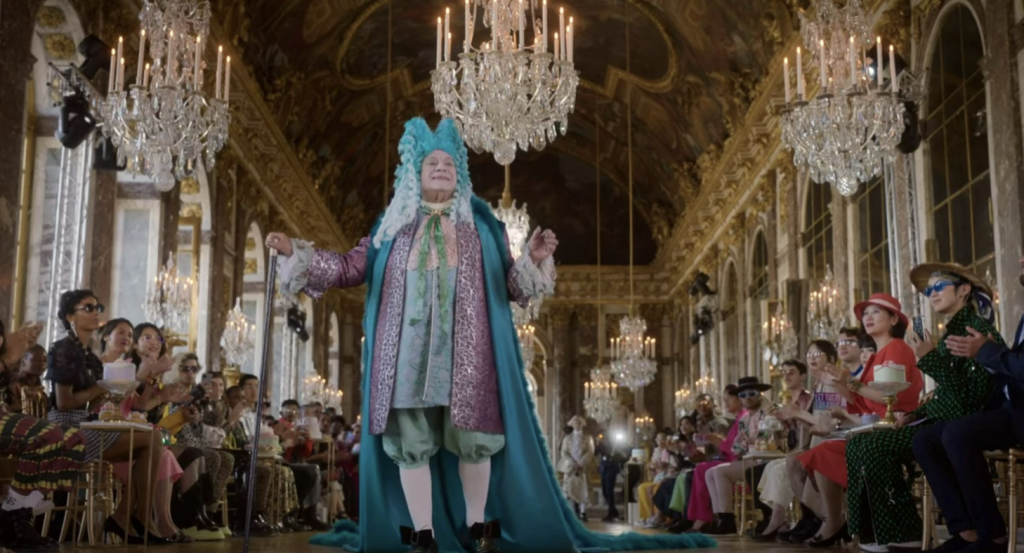
Architectural reference to The Hall of Mirrors in the Palace of Versailles, from Emily in Paris, S2E10, directed by Darren Star, 2021. The Cinemaholic.
The nod to the French Revolution in episode ten of Emily in Paris is not a coincidence. The French government remained at Versailles until the French Revolution, when Marie-Antoinette and King Louis XVI were forced from the estate.
The Hall of Mirrors was the perfect filming location for the finale due to the political feud between the two designers that “Savoir” represented. It mimics the power and authority that King Louis XIV proclaimed through his construction of Versailles- Jules Hardouin-Mansart constructed the Hall of Mirrors in 1678, while the vaulted ceilings were painted by Charles Le Brun between 1681 and 1684.
Now, let’s jump into season trois and the Eiffel Tower.
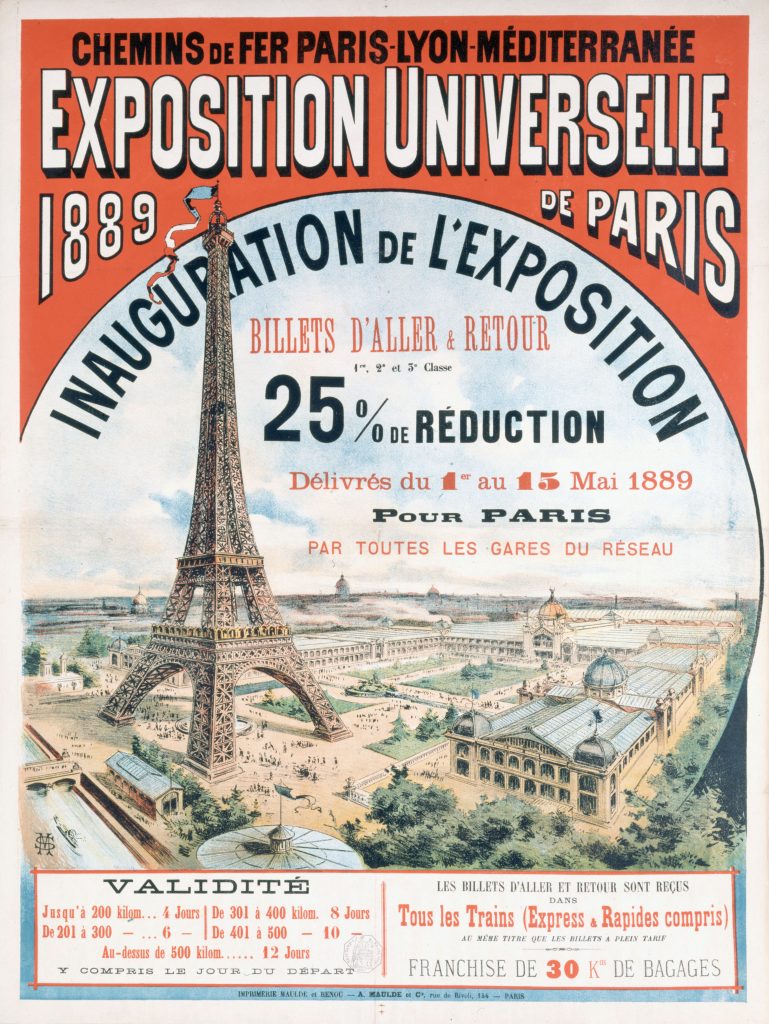
Poster for the 1889 Paris World’s Fair, 1889, The Musée Carnavalet, Paris, France. Wikimedia Commons (public domain).
First, the most noteworthy monument in episode one of season three is the Eiffel Tower. Although the Eiffel Tower has appeared in previous seasons, this is the first time the characters visit one of its restaurants.
The Eiffel Tower has had a remarkable history since it was made for the 1889 World’s Fair in Paris. The monument was made from wrought iron in a lattice pattern to create a soaring tower. It is located on the Champ de Mars and was designed by engineer Gustave Eiffel. When it was built, it was the tallest structure in the world! Although the monument was criticized by French artists and scholars at first, today the Eiffel Tower is an iconic symbol of France.
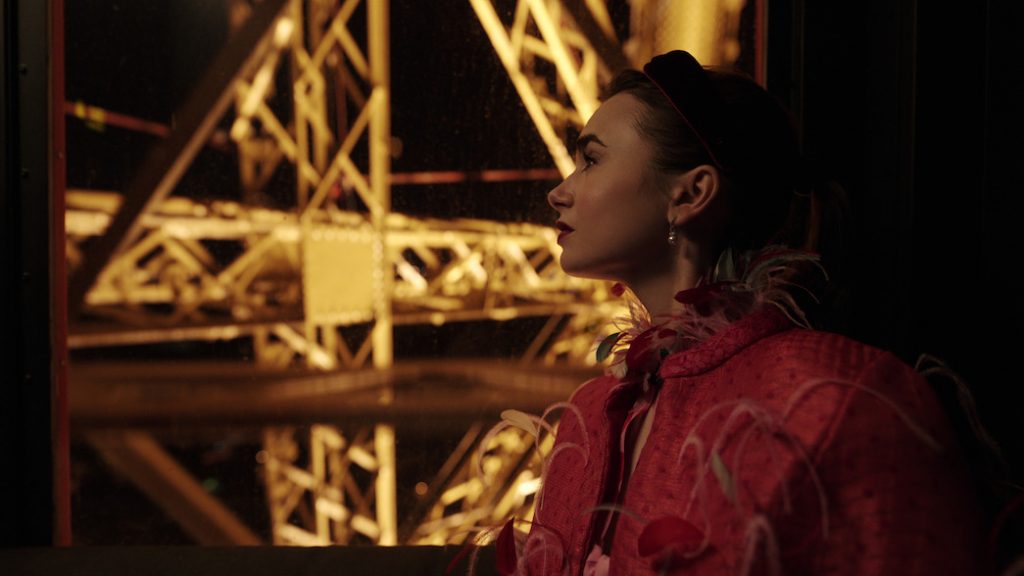
Reference to the Eiffel Tower from Emily in Paris, S3E01, released by Netflix.
Gustave Eiffel also built the metal framework of the Statue of Liberty in the United States. Therefore, the Eiffel Tower suits Emily’s character as the location where she struggles to make a huge work decision (so American of her). No spoilers will be spilled in this article, but perhaps watching this episode will provide more insight into the symbolism of the episode.
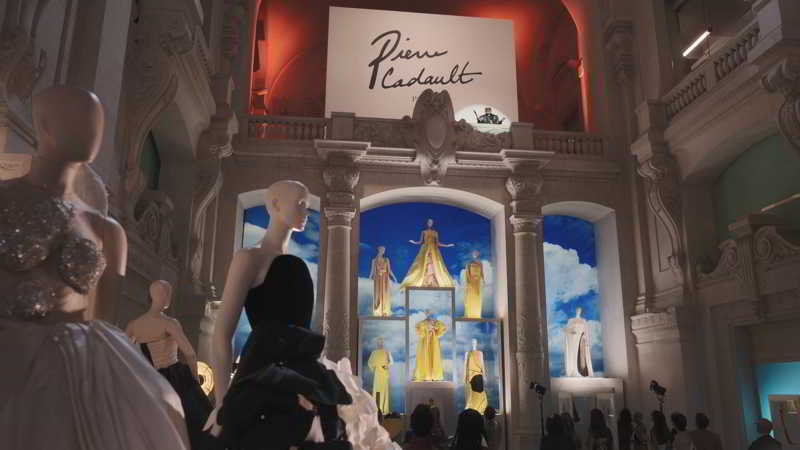
Reference to Musée des Arts Décoratifs from Emily in Paris, S3E02, directed by Darren Star, 2022. Netflix.
Next, in episode two, Pierre Cadault holds a fashion retrospective at the Musée des Arts Décoratifs. According to Emily in Paris, creator Darren Star saw the real-life Dior exhibition and was inspired to recreate the exhibition in the show. The museum has over one million objects in its collection and is considered the largest museum of decorative arts in Europe. Currently, it is located in the western wing of the Louvre Palace in the Pavillon de Marsan, which was built in 1666.
The next filming locations are not museums, but rather two famous French Cathedrals!
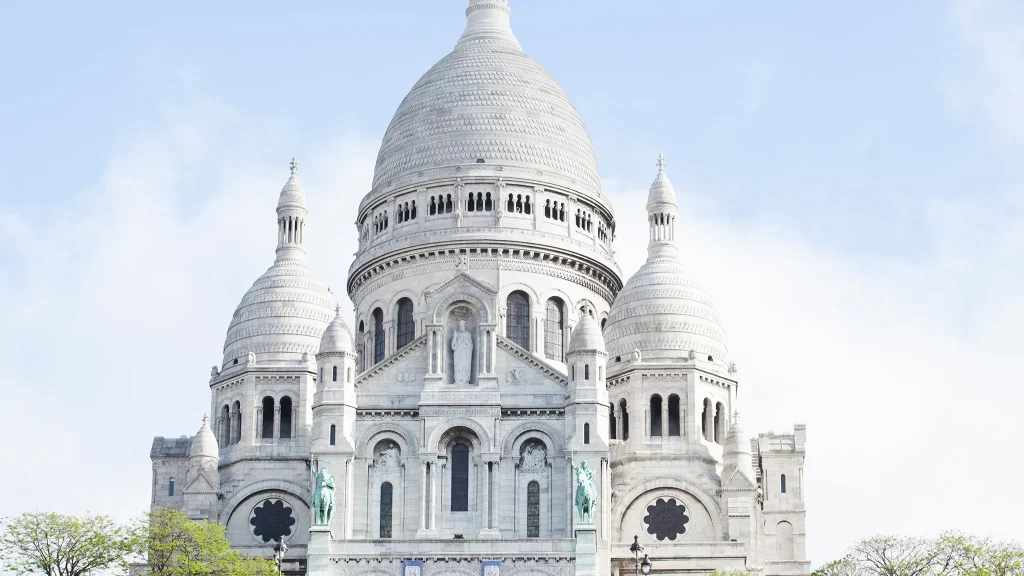
Basilica of Sacré Coeur, Paris, France. Condé Nast Traveler.
Episode four is a whirlwind with Emily’s unemployment hiatus as she tours Paris and films it all on her Instagram channel. In this episode, she visits the outside of both Montmartre and Notre Dame. Specifically in Montmartre, she visits the Basilica of Sacré Coeur, which is a Roman Catholic Church dedicated to the Sacred Heart of Jesus. Interestingly, the creation of the basilica was proposed by the Bishop of Nantes in 1870 after Napoleon III was captured in the Franco-Prussian War. Five years later, construction began, and Paul Abadie designed the Neo-Byzantine-Romanesque plan. Construction on the basilica continued for another 40 years, with five different architects being involved.
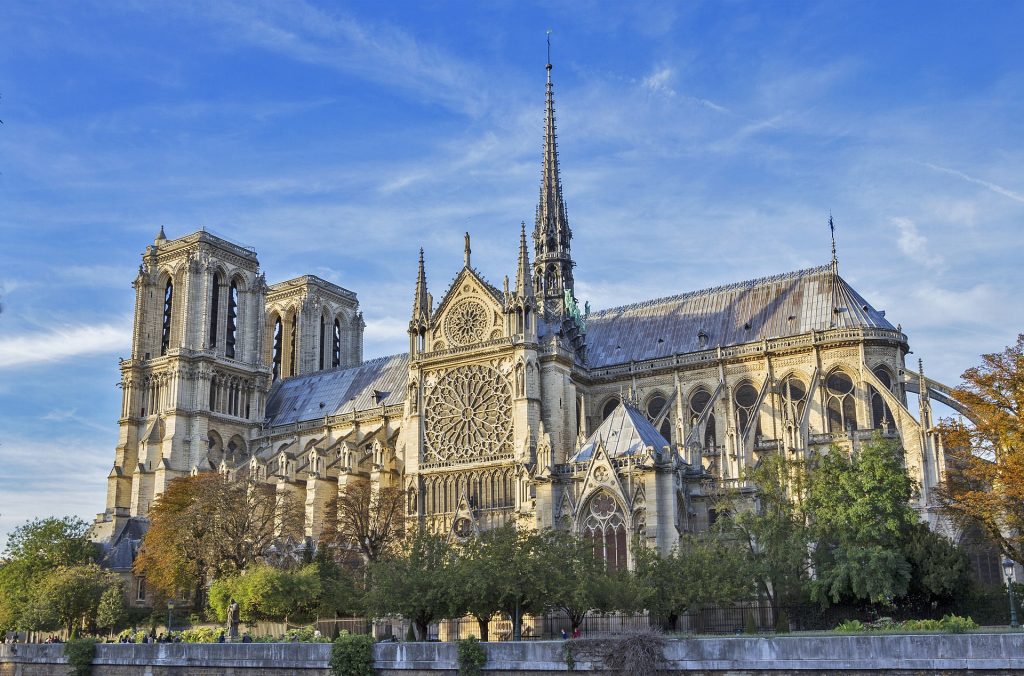
Notre-Dame Cathedral, Paris, France. Wikimedia Commons (public domain).
Later, we watch Emily and Mindy ride Segways in front of the Notre-Dame Cathedral, which is still under renovation since the April 2019 fire. This beautiful medieval Catholic cathedral dedicated to the Virgin Mary is designed in the French Gothic architectural style, which emerged in France in 1140 and was popular until the 16th century. A rib vault and flying buttresses are typical characteristics of the French Gothic style, allowing for large stained glass windows, as we see in Notre-Dame.
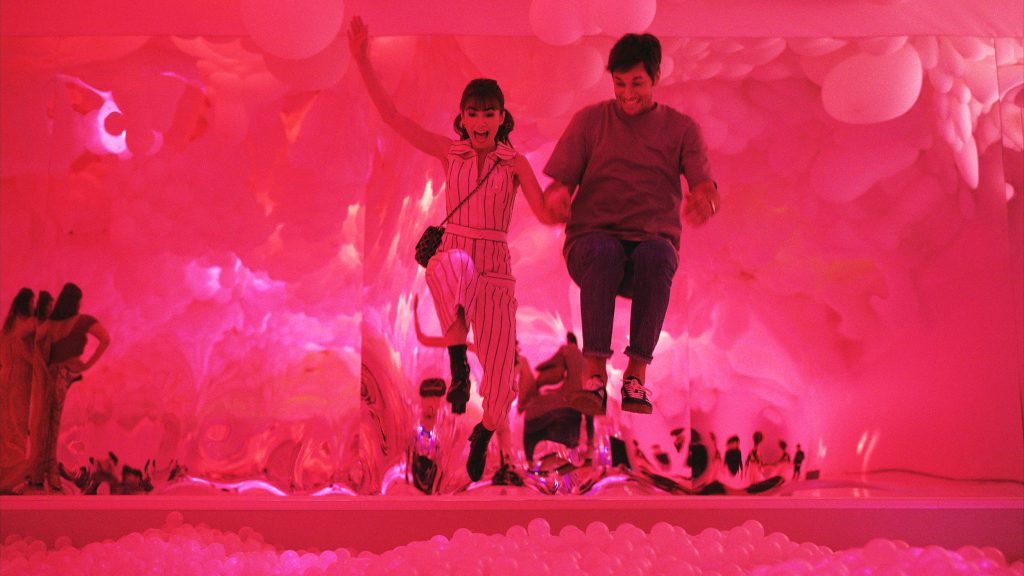
Still of The Balloon Museum from Emily in Paris, S3E07, directed by Darren Star, 2022. Artnet.
In episode seven, Gabriel and Emily visit the Balloon Museum at Paris’s La Grand Hall de la Villette. During the filming of season three, the Balloon Museum was a pop-up exhibition that only lasted 6 months before traveling to Milan, Italy. According to the museum, it was the first of its kind to feature an entire exhibition of balloon artwork. The immersive experience had furnishings made of balloons— like a couch, coffee table, and even a lamp!
In this episode, we watch Gabriel and Emily jump into the Hyper Cosmo pool, a ball pit at the Balloon Museum. The museum was chosen as a filming location because the producers of Emily in Paris like to stay on top of current trends and events.
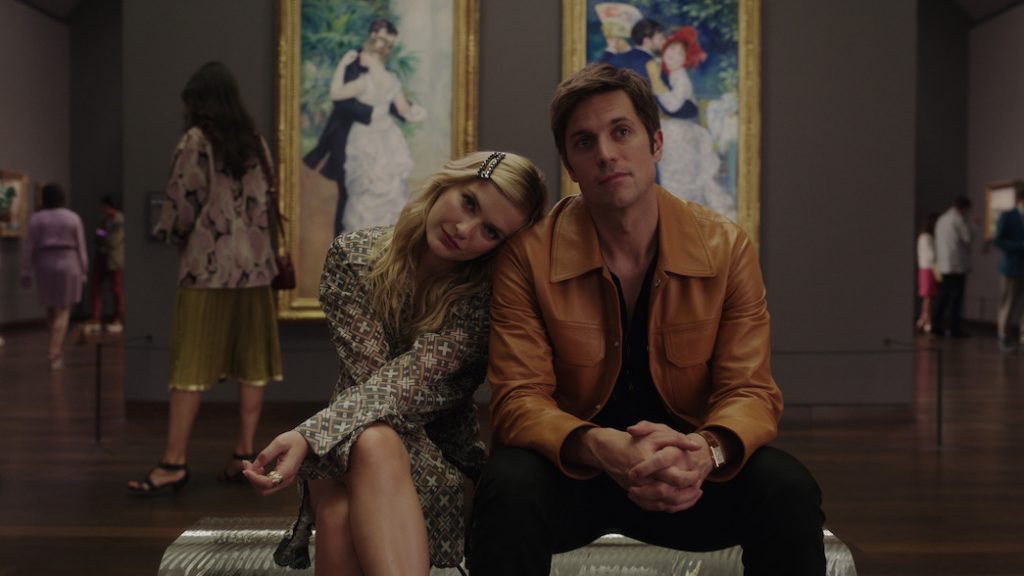
Still from Emily in Paris, S3E09, directed by Darren Star, 2022. Netflix.
Finally, Emily in Paris shows viewers actual works of art in a museum in episode nine! In this episode, Gabriel and Camille go to the Musée d’Orsay to discuss a serious matter (watch the episode to find out why). Here the actors sit in front of two famous works of art by Pierre-Auguste Renoir. Renoir was a famous French Impressionist painter who was fascinated with painting femininity.
These two artworks, known as Dance in the Country and Dance in the City, were both painted in 1883 as companion pieces commissioned by Paul Durant-Ruel. It might be difficult to tell in the show, but the figures in the painting are life-sized!
Overall, season three of Emily in Paris showcased a variety of monuments, architecture, and, finally some artwork. Of course, the show has many more filming locations and art references. What were your favorites?
Robert W. Berger, Versailles: The Chateau of Louis XIV, Penn State University Park: The Pennsylvania State University Press, PA, USA, 1985.
DailyArt Magazine needs your support. Every contribution, however big or small, is very valuable for our future. Thanks to it, we will be able to sustain and grow the Magazine. Thank you for your help!